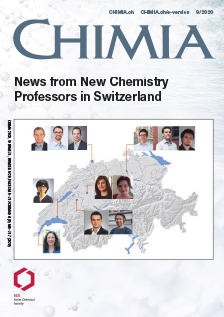Tailor-made Functional Polymers for Energy Storage and Environmental Applications
DOI:
https://doi.org/10.2533/chimia.2020.667PMID:
32958102Keywords:
Carbon capture, Energy storage, Li-ion batteries, Porous materials, Supramolecular polymersAbstract
CO2 emissions into the atmosphere account for the majority of environmental challenges and its global impact in the form of climate change is well-documented. Accordingly, the development of new materials approaches to capture and convert CO2 into value-added products is essential. Whereas the increased availability of renewable energy is curbing our reliance on fossil fuels and decreasing CO2 emissions, the widespread adaptation of renewable energy still requires the development of high energy density batteries i.e., lithium ion batteries (LIBs). To address these energy and environmental challenges, our group has been developing porous organic polymers (POPs) with precise control over their porosity and surface chemistry for CO2 capture, separation and conversion. To realize simultaneous CO2 separation and conversion, we are also developing catalytically active two-dimensional membranes and POPs. In the area of LIBs, we have recognized the potential of supramolecular chemistry as a general strategy for solving the capacity-fading problem associated with high energy density electrode materials such as Li-metal, silicon and sulfur, which offer extremely high battery capacity compared to conventional LIBs. Accordingly, we have demonstrated how molecular-level design of one- and two-dimensional supramolecular polymers can be directly translated into an improved electrochemical performance in high energy density LIBs.
Downloads
Published
Issue
Section
License
Copyright (c) 2020 Ali Coskun

This work is licensed under a Creative Commons Attribution-NonCommercial 4.0 International License.







